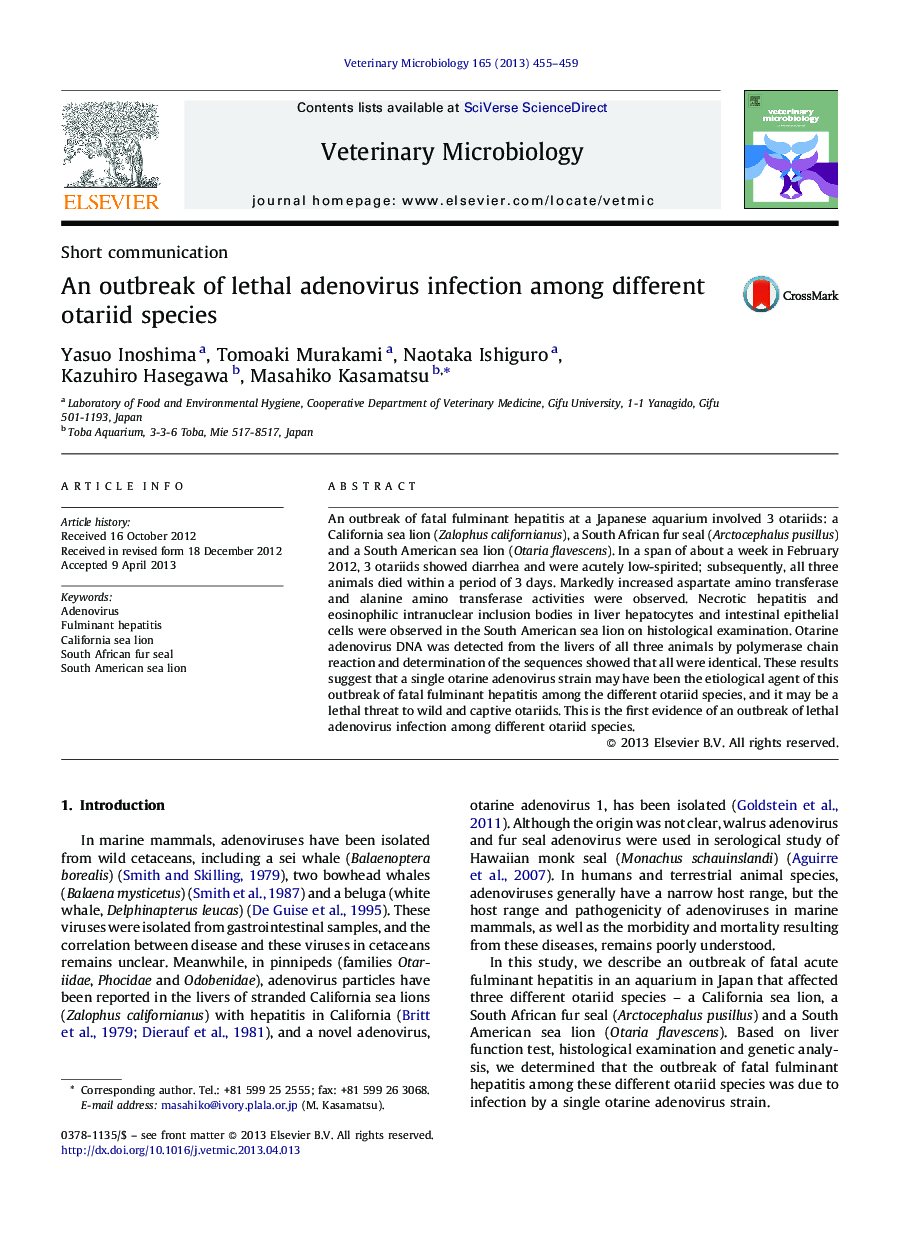| Article ID | Journal | Published Year | Pages | File Type |
|---|---|---|---|---|
| 2466848 | Veterinary Microbiology | 2013 | 5 Pages |
An outbreak of fatal fulminant hepatitis at a Japanese aquarium involved 3 otariids: a California sea lion (Zalophus californianus), a South African fur seal (Arctocephalus pusillus) and a South American sea lion (Otaria flavescens). In a span of about a week in February 2012, 3 otariids showed diarrhea and were acutely low-spirited; subsequently, all three animals died within a period of 3 days. Markedly increased aspartate amino transferase and alanine amino transferase activities were observed. Necrotic hepatitis and eosinophilic intranuclear inclusion bodies in liver hepatocytes and intestinal epithelial cells were observed in the South American sea lion on histological examination. Otarine adenovirus DNA was detected from the livers of all three animals by polymerase chain reaction and determination of the sequences showed that all were identical. These results suggest that a single otarine adenovirus strain may have been the etiological agent of this outbreak of fatal fulminant hepatitis among the different otariid species, and it may be a lethal threat to wild and captive otariids. This is the first evidence of an outbreak of lethal adenovirus infection among different otariid species.
